Related Research Articles

The University of Oxford has a long tradition of academic dress, which continues to the present day.
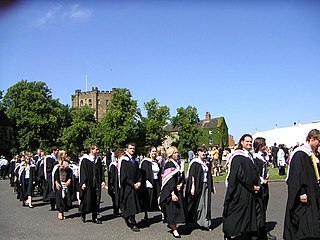
The academic dress of Durham University has many similarities with that of other older British universities such as Oxford and Cambridge. Most colleges of Durham University insist on gowns being worn on formal occasions, including matriculation and formal halls (dinners); exceptions are Van Mildert, St Cuthbert's Society, Collingwood, Stephenson, St Aidans, and The College of St Hild and St Bede. Some colleges also insist on their being worn to Junior Common Room meetings, and they are often seen in college chapels. At formal halls, only gowns are worn and doctors normally wear their undress gowns; for more ceremonial occasions full-dress gowns and hoods are worn by graduates. Until 1990, the General Regulations of university 'recommended' the wearing of gowns by members of the university when attending divine service at the Cathedral – but this is now left to individual choice apart from at certain services. Gowns are also customarily worn to meetings of the university Senate by members of that body.
The academic dress of the former University of Wales was designed for the first graduations in 1893, and has as its main identifying feature a faculty colour scheme involving 'shot silks'.
The system of academic degrees at the University of Oxford can be confusing. This is not merely because many degree titles date from the Middle Ages, but also because many changes have been haphazardly introduced in recent years. For example, the (medieval) BD, BM, BCL, etc. are postgraduate degrees, while the (modern) MPhys, MEng, etc. are integrated master's degrees, requiring three years of undergraduate study before the postgraduate year.
A Bachelor of Music (BMus) is an academic degree awarded by a college, university, or conservatory upon completion of a program of study in music. The degree may be awarded for performance, music education, composition, music theory, musicology / music history, music technology, music therapy, sacred music, music business/music industry, entertainment, music production, or jazz studies. Since the 2010s, some universities have begun offering degrees in music composition with technology, which include traditional theory and musicology courses and sound recording and composition courses using digital technologies.
A graduate diploma is generally a qualification taken after completion of a first degree, although the level of study varies in different countries from being at the same level as the final year of a bachelor's degree to being at a level between a master's degree and a doctorate. In some countries the graduate diploma and postgraduate diploma are synonymous, while in others the postgraduate diploma is a higher qualification.
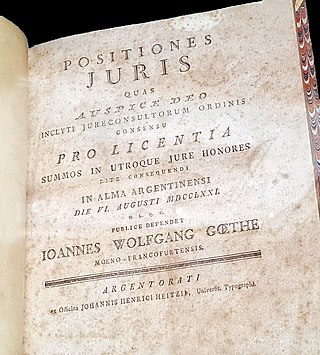
A licentiate is an academic degree present in many countries, representing different educational levels. It may be similar to a master's degree when issued by pontifical universities and other universities in Europe, Latin America, and Syria.
A Lambeth degree is an academic degree conferred by the Archbishop of Canterbury under the authority of the Ecclesiastical Licences Act 1533 (25 Hen. 8. c. 21) as successor of the papal legate in England. The degrees conferred most commonly are DD, DCL, DLitt, DMus, DM, BD and MA. The relatively modern degree of MLitt has been conferred in recent years, and the MPhil and PhD are now available.
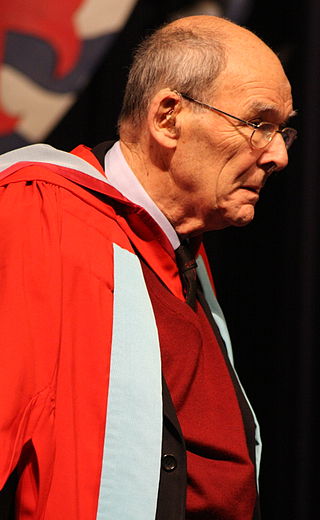
In general, the academic dress of the University of Nottingham dates from the award of its Royal Charter in 1948. Prior to this date, University College, Nottingham taught students for University of London examinations and "Nottingham graduates" were actually London graduates and wore the appropriate dress. There was, however, a unique Nottingham undergraduate gown. This still exists but, like equivalent gowns at most other universities, is now very rarely seen.
Academic dress at the University of St Andrews involves students wearing distinctive academic gowns whilst studying at the University of St Andrews. Undergraduate gowns in Scotland were once common at all the ancient universities of Scotland, with each having its own distinctive style. St Andrews undergraduates wear either a scarlet gown if they are part of the United College and studying in the Faculties of Arts, Medicine and Science, or a black gown if they are part of St Mary's College and studying in the Faculty of Divinity.
The academic and official dress of the University of Warwick dates originally from the mid-1960s, shortly after the university's foundation. Despite persistent offers from Charles Franklyn the theatrical costume designer Anthony Powell was commissioned to design robes for officials and graduates of the university. Due to pressure of other work, and some apparent differences of opinion, Powell withdrew from the project, and the robes for graduates subsequently designed in consultation with J. Wippell and Company of Exeter, with Ede and Ravenscroft designing and making the robes for officials.
Academic dress of the University of London describes the robes, gowns and hoods which are prescribed by the university for its graduates and undergraduates.
Licentiate of the Royal Academy of Music (LRAM) is a professional diploma, or licentiate, formerly open to both internal students of the Royal Academy of Music and to external candidates in voice, keyboard and orchestral instruments and guitar, as well as conducting and other musical disciplines. Candidates in instrumental and vocal studies could opt to take the LRAM in either teaching or performing. Since the 1990s, the external route has been withdrawn and now the diploma provides a comprehensive introduction to the principles of teaching through practical work. The LRAM is available to all students of the Royal Academy of Music.
There are a number of universities in Queensland, Australia, all with distinct academic dress.
Associate of the Royal College of Music (ARCM) was a professional qualification, equivalent to a university degree, that was awarded by the Royal College of Music. Like the Licentiate of the Royal Academy of Music (LRAM), it was offered in teaching or performing.
The University of Leeds, like other universities in the United Kingdom and many other countries throughout the world, has its own unique system of academic and ceremonial dress for undergraduates, graduates and senior officials. As at most other universities, graduands will wear the gown, hood and hat appropriate to the degree they are about to receive. All of the graduates' hoods incorporate one or more shades of green, and the Doctors of Philosophy, Education and Clinical Psychology are unique in the UK in having a green full-dress gown.
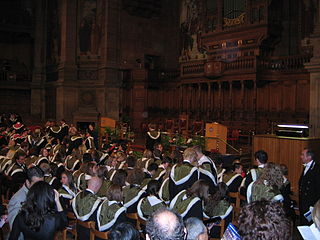
Academic dress at the University of Edinburgh is compulsory at official ceremonial occasions, such as graduation and the installations of Rector and Chancellor, and otherwise optional, usually only worn for events.

Academic dress prescribed at the Trinity College Dublin follows a relatively complex protocol which, nonetheless, shares some particular characteristics with other universities in Ireland and with the University of Oxford in the United Kingdom.
The Graduate of Trinity College of Music, London diploma (GCTL) was part of a model that all the mainline British conservertoires followed and was open to internal students of the college after final examination and successful public recital within the usual honours structure. Candidates followed a three or four-year course including first and second instrumental or vocal studies, harmony and counterpoint, aural training, history and analysis, conducting, composition and arrangement, and an academic thesis. The Royal College and the Royal Academy of Music followed a similar model, awarding the GRSM diploma. The Royal Northern College of Music also awarded the diploma GRSM (Manchester), and the Guildhall School of Music and Drama, awarded the GGSM diploma. The mainline British conservatoires of music phased out the professional graduate diplomas during the 1990s in favour of a BMus model. Trinity College London awarded the last GTCL diploma in 1997.
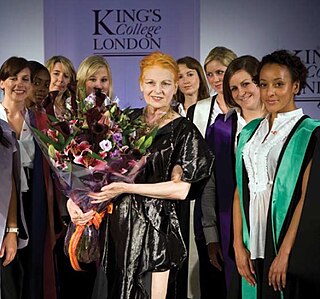
Academic dress of King's College London describes the robes, gowns, and hoods worn by undergraduates, graduates and associates of King's College London. After being vested the power to award its own degrees from the University of London in 2006, graduates began wearing King's College London academic dress in 2008.